5G networks are cellular systems where the service region is segmented into smaller geographic areas known as cells. Within each cell, all 5G-enabled devices communicate via radio waves with a cellular base station through fixed antennas, using frequencies designated by the base station. These base stations, also known as nodes, connect to telephone network switching centers and Internet routers through high-bandwidth optical fiber or wireless backhaul connections. As a mobile device moves from one cell to another, it is automatically and seamlessly handed off, maintaining uninterrupted service.
The 3rd Generation Partnership Project (3GPP), an industry consortium responsible for setting 5G standards, defines “5G” as any system utilizing 5G New Radio (5G NR) software, a definition widely adopted by late 2018. 5G networks continue to employ Orthogonal Frequency-Division Multiplexing (OFDM) encoding.
Many network operators employ millimeter waves, referred to as FR2 in 5G terminology, to enhance capacity and throughput. Millimeter waves have shorter ranges compared to lower frequency microwaves, necessitating smaller cells. These waves also struggle more with penetration through buildings and human bodies. Millimeter-wave antennas are smaller than those used in prior cellular networks.
The enhanced data rates in 5G are partly due to the use of higher-frequency radio waves in addition to the low- and medium-band frequencies used in previous networks. 5G networks operate across three frequency bands: low, medium, and high.
5G can be deployed in low-band, mid-band, or high-band millimeter-wave frequencies. Low-band 5G operates in a similar frequency range to 4G, between 600 and 900 MHz, and can offer download speeds of 5 to 250 megabits per second (Mbit/s). The coverage area of low-band cell towers is comparable to that of 4G towers. Mid-band 5G, using 1.7 to 4.7 GHz microwaves, provides speeds of 100 to 900 Mbit/s, with each cell tower covering several kilometers in radius. This band is the most widely deployed and was prevalent in many metropolitan areas by 2020. In some regions, the low band is omitted, making mid-band the baseline service level. High-band 5G, operating between 24 and 47 GHz (near the lower end of the millimeter wave spectrum), can achieve gigabit-per-second (Gbit/s) download speeds, similar to co-axial cable Internet. However, millimeter waves have a limited range and can be blocked by walls, windows, and even pedestrians, requiring numerous small cells. Due to their higher cost, high-band deployments are focused on dense urban environments and crowded areas like sports stadiums and convention centers. These speeds were demonstrated in 2020, with further increases expected as the rollout continues.
Globally, the 24.25 to 29.5 GHz spectrum has been the most widely licensed and deployed range for 5G millimeter-wave technology.
How Does 5G work?
Like other cellular networks, 5G networks utilize a system of cell sites that segment their coverage area into sectors, transmitting encoded data via radio waves. Each cell site must connect to a network backbone, either through wired or wireless backhaul connections. While similar to 4G LTE, 5G introduces changes in data encoding and offers carriers more options in terms of the airwaves they can use. Specifically, 5G employs Orthogonal Frequency Division Multiplexing (OFDM) encoding, similar to 4G LTE, but with an air interface designed for significantly lower latency and greater flexibility.
5G technology introduces the use of “high-band,” short-range airwaves that were incompatible with 4G. However, 5G can operate across any frequency, resulting in three distinct types of 5G experiences: low-band, mid-band, and high-band. While 5G isn’t inherently much faster than 4G on the same radio channels, it allows for the use of much wider channels across a broader range of frequencies. The Federal Communications Commission (FCC) and carriers must make these wider channels available, which has been a challenge.
In 4G, up to seven 20MHz channels can be combined for a total of 140MHz of spectrum usage, though typically, phones such as iPhones use 60MHz or less. In contrast, low- and mid-band 5G phones can combine three 100MHz channels for 300MHz usage and add several 20MHz 4G channels on top. High-band 5G allows for the use of up to eight 100MHz channels. However, the availability of these airwaves is crucial for achieving higher speeds.
Carriers can share channels between 4G and 5G using dynamic spectrum sharing (DSS), making the boundaries between 4G and 5G channels flexible based on demand. Verizon has used DSS for its “nationwide” 5G, but this doesn’t free up new airwaves for 5G, limiting performance improvements compared to 4G.
Low-band 5G operates below 2GHz, utilizing older cellular and TV frequencies. These frequencies cover great distances but lack wide channels, resulting in low speeds similar to 4G. Low-band 5G channels range from 5MHz (for AT&T) to 20MHz (for T-Mobile). Phones often display “5G” even when not using 5G, complicating user experience.
Mid-band 5G operates in the 2-10GHz range, covering current cellular and Wi-Fi frequencies and slightly higher frequencies. These networks offer a decent range, typically about half a mile from their towers. In many countries, mid-band networks carry most 5G traffic, with around 100MHz available per carrier. In the US, various mid-band slices are used, with some controversies like the 3.7-4.0GHz band potentially interfering with airline radio altimeters. T-Mobile’s “ultra capacity” network runs on up to 100MHz of 2.5GHz channels, while AT&T and Verizon recently introduced mid-band networks using the C-band (3.7-3.8GHz). Additional mid-band coverage in the 3.45-3.55GHz range will be activated by AT&T, T-Mobile, and Dish.
High-band 5G, or millimeter-wave, is a new innovation, using airwaves in the 20-100GHz range. These short-range waves enable very fast speeds, up to 3Gbps on Verizon’s network, but require dense small cell deployments due to their limited range (about 800 feet). High-band 5G has primarily been used in high-density areas like campuses and stadiums, with extensive use for backhaul connections previously. The technology requires smaller, lower-power base stations, as opposed to fewer, more powerful macrocells.
Carriers have installed small cells in major cities since 2017 to enhance 4G capacity and can upgrade these sites for 5G by adding an extra radio. However, deploying small cells in suburban areas has faced resistance, similar to earlier challenges in establishing cellular service. Verizon is working to improve high-band 5G coverage through deals with companies producing 5G extenders and repeaters.
Where to Find 5G Availability?
As 5G networks expand across the United States, the experiences offered by major carriers—Verizon, T-Mobile, and AT&T—vary significantly due to their distinct approaches to deploying this technology. Here’s a breakdown of what you can expect from each carrier:
Verizon
Verizon’s 5G network is a high-speed, low-latency mobile service designed to enhance connectivity and support advanced technologies. It operates on both mmWave and sub-6 GHz bands, delivering ultra-fast speeds, especially in dense urban areas. Verizon’s 5G Ultra Wideband provides peak download speeds up to 4 Gbps, ideal for streaming, gaming, and real-time applications. With widespread coverage, Verizon aims to improve mobile experiences and support innovations like IoT, smart cities, and autonomous vehicles, solidifying its position as a leader in next-gen wireless technology. Verizon’s 5G network is characterized by a multi-tiered approach:
Nationwide 5G:
This is built on shared 4G channels, providing slower speeds compared to other 5G bands. It’s more about broad coverage than high speed.
Mid-Band 5G:
Available in 46 metropolitan areas, this offers a balance of coverage and speed, making it faster than low-band but with a wider reach than high-band.
High-Band 5G:
Present in more than 60 cities, high-band 5G (also known as millimeter-wave) delivers the fastest speeds but has limited coverage due to its shorter range and higher susceptibility to obstructions.
Verizon’s coverage map combines mid-band and high-band 5G under the “5G UW” (Ultra Wideband) label, though most of this coverage is mid-band.
T-Mobile
T-Mobile’s 5G network is built on a combination of low-band, mid-band, and mmWave spectrum, offering extensive coverage and impressive speeds. Known for its widespread availability, T-Mobile’s 5G covers over 300 million people across the U.S., with its Ultra Capacity 5G reaching over 250 million. This network provides faster download and upload speeds, lower latency, and improved capacity, enhancing experiences for streaming, gaming, and connected devices. T-Mobile continues to expand and improve its 5G services, positioning itself as a leader in the next generation of wireless technology.
Nationwide Low-Band 5G:
This offers extensive coverage across the country, ensuring that even rural areas can access 5G, though at speeds closer to 4G LTE.
Mid-Band 5G:
Covering most of the population, mid-band 5G provides a significant speed boost over low-band and is the primary driver of T-Mobile’s enhanced 5G experience.
High-Band 5G:
While T-Mobile does have some high-band 5G, updates on its coverage are limited. This band is not as widely deployed as Verizon’s high-band network.
T-Mobile brands its mid and high-band 5G as “5G UC” (Ultra Capacity), highlighting its capacity and performance improvements over low-band 5G.
AT&T
AT&T’s 5G network is designed to provide fast, reliable, and secure wireless connectivity. Utilizing a combination of low-band, mid-band, and high-band (mmWave) spectrum, AT&T’s 5G offers extensive coverage and high-speed performance. The network supports a wide range of applications from enhanced mobile broadband to IoT, aiming to revolutionize industries with innovations in areas like smart cities and autonomous vehicles. AT&T’s commitment to expanding and improving its 5G infrastructure ensures it remains a key player in the next generation of wireless technology. AT&T’s 5G deployment includes:
Low-Band 5G
Offering wide coverage with slower speeds, this forms the bulk of AT&T’s 5G network across the country.
Mid-Band 5G
Available in a limited number of cities, mid-band 5G provides faster speeds but has a more restricted footprint.
High-Band 5G
Deployed in specific “venues” such as stadiums and campuses, high-band 5G delivers very high speeds in these localized areas.
AT&T uses the term “5G” for its low-band network and “5G+” for its mid and high-band networks, indicating the enhanced performance of the latter.
The Evolution of 1G to 5G
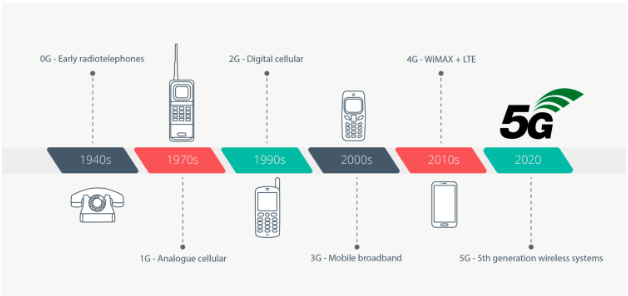
1G: The Beginning
The journey of mobile networks began with the launch of the first-generation network (1G) by Nippon Telegraph and Telephone (NTT) in 1979. By 1984, Japan had achieved a significant milestone by becoming the first country to implement a nationwide 1G network. This era marked the birth of cellular technology as we know it. In 1983, Motorola introduced the DynaTAC, the first commercially available cell phone, marking a significant leap in mobile communication.
2G: The Digital Revolution
The second-generation network (2G) was introduced in Finland in 1991, bringing substantial improvements over its predecessor. Key advancements included better sound quality, reduced static, and encrypted calls, enhancing the security of communications. Additionally, 2G introduced the ability to transfer data bits, allowing users to access media on their cell phones for the first time.
3G: Speed and Standardization
In 2001, the third-generation (3G) network made its debut, focusing on standardizing network protocols across different vendors. The hallmark of 3G was its significantly increased speed, which allowed users to browse the internet on their mobile devices. With four times the data transferring capability of 2G, 3G also introduced international roaming services, making global communication more seamless.
4G: The Era of High-Speed Connectivity
The fourth-generation (4G) network was introduced in 2009, revolutionizing mobile connectivity with its ability to stream high-quality video and provide faster web access. By 2011, LTE (Long-Term Evolution) networks began launching in Canada, offering even greater speeds. Today, 4G LTE remains prevalent, especially in areas where 5G coverage has yet to be established.
5G: The Future of Connectivity
Development of the fifth-generation (5G) network began in 2015 under the auspices of the 3rd Generation Partnership Project (3GPP), a collaborative group of telecommunications associations. The 3GPP aimed to develop globally applicable specifications for 3G and beyond, meeting four times a year to plan and release new functionalities.
In 2017, the initial 5G and 5G NR (New Radio) specifications were released. The following year, in 2018, the 3GPP approved Release 16, which included specifications such as network slicing. 5G was publicly launched in 2019, with Verizon being one of the first carriers to develop a 5G mobile network in Chicago and Minneapolis. Other major carriers like Sprint, AT&T, and T-Mobile soon followed, each with different strategies—some focusing on high-speed mmWave infrastructure and others on developing lower band frequencies first.
By 2020, 3GPP Release 16 was published, emphasizing applications of 5G in areas such as automotive and industrial IoT. Release 18, launched in 2022, further enhanced system architecture, security, multimedia codecs, and management orchestration and charging features.
Difference Between 5G and Other Networks
5G has garnered significant attention for its transformative potential across various industries, primarily because it operates at higher frequencies and introduces capabilities for the rapid and secure transfer of large data volumes. Since the advent of broadband technology in the early 2000s, the volume of data generated by wireless devices has been growing exponentially. Modern technologies such as artificial intelligence (AI) and machine learning (ML) demand substantial data, which older networks struggle to handle. In contrast, 5G is ideally suited for applications with high data requirements. Here are some notable distinctions between 5G and its predecessors:
Smaller Physical Footprint
5G transmitters are more compact compared to those used in 3G, 4G, and 4G LTE networks. Additionally, the small cells that divide coverage areas require less power.
Improved Error Rates
5G leverages an adaptive Modulation and Coding Scheme (MCS), which is a sophisticated method for data transmission far superior to those used in 3G and 4G networks. Consequently, 5G has significantly lower Block Error Rates (BER), indicating fewer errors on its networks.
Better Bandwidth
Utilizing a broader spectrum of radio frequencies than previous network generations, 5G can support a higher number of devices simultaneously.
Low Latencies
5G offers reduced latency, meaning the time it takes for data to travel between devices on the network is shorter. This improvement enhances activities such as video gaming, file downloading, and cloud computing, making them much faster than on older wireless networks.
What are the Benefits of 5G?
5G technology offers several significant benefits, making it a transformative advancement in telecommunications. Here are some key benefits of 5G:
5G Speed
5G speeds can vary significantly depending on multiple factors, such as location, network congestion, the specific 5G network used, and the type of 5G device. In the U.S., most nationwide networks rely on low-band 5G, with some expansion into mid-band 5G. Mid-band 5G offers a balance of speed and range, improving upon the lower speeds of low-band 5G. High-band mmWave 5G provides the fastest speeds but has limited range and poor penetration through obstacles, making it ideal for dense areas like sports stadiums.
Low Latency
One of the key benefits of 5G is its reduced latency, which is crucial for data-intensive and mission-critical applications. Latency is the time it takes to send data, and with 5G, it can be as low as 1 millisecond. This ultra-low latency is 250 times faster than human reaction times to visual stimuli, enabling near-instantaneous responses for autonomous vehicles, remote surgeries, and sophisticated robotics. For example, an autonomous car can start braking almost immediately upon detecting an obstacle, significantly reducing stopping distances compared to human reactions.
Bandwidth
5G technology operates across three major frequency bands, each offering distinct advantages:
- Frequencies between 600 MHz and 1 GHz, providing broad coverage but lower speeds.
- Frequencies from 1 GHz to 6 GHz, including the C-Band (3.7 to 3.98 GHz), offering a balance of speed and range.
- Frequencies from 24 to 39 GHz, capable of delivering speeds up to 10 Gbps under ideal conditions but limited to short distances and clear line-of-sight.
Edge Slicing
5G edge slicing allows network operators to create multiple Virtual Private Networks (VPNs) within their network, tailored to specific industrial and enterprise needs. These network slices can be deployed flexibly, such as dedicating a slice to a particular campus or city area. Edge slicing ensures secure and efficient data traffic management, making it ideal for applications that demand low latency and high bandwidth.
Coverage
As of now, 62% of Americans have access to high-speed 5G at home. Globally, 47 of the world’s 70 largest economies have active 5G networks. Despite leading in coverage, the U.S. is struggling to keep pace with growing demand. By 2027, 5G data traffic is expected to increase 7 to 9 times from current levels, with mobile traffic expanding nearly six fold by 2033. To meet this demand, especially in urban areas, the U.S. needs to significantly increase mid-band 5G spectrum availability.
More Connected Devices
5G is designed to support a vast number of Internet of Things (IoT) devices, enabling a fully connected world. It can handle up to 1 million devices per 0.386 square miles, with low power consumption allowing devices to operate for extended periods without maintenance. While 5G offers high speed and low latency, not all devices require such performance levels. For less demanding applications, LTE-M and NB-IoT provide viable alternatives with lower speeds and power requirements.
5G mmWave Benefits
Initial implementations of 5G mmWave faced challenges like limited range and high costs. However, recent innovations promise better range and reduced costs. For instance, Qualcomm’s compact macro 60 dBm EIRP design offers up to a 240% increase in range compared to previous small cell platforms. The U.S. and Japan plan to enhance their networks using existing infrastructure, like light poles. 5G mmWave’s high bandwidth and low latency make it ideal for data-intensive applications and more reliable than earlier wireless technologies.
Transportation
5G will enhance vehicle-to-vehicle (V2V) and vehicle-to-infrastructure (V2I) communications, significantly supporting the development of autonomous vehicles and adaptive traffic management systems. This technology will allow vehicles to communicate with each other and with road infrastructure, leading to:
- Improved safety through real-time hazard detection and avoidance.
- Reduced traffic congestion with intelligent traffic signal systems.
- Enhanced route optimization, resulting in shorter travel times and lower emissions.
Smart Cities
The integration of 5G will facilitate the development of smart cities, transforming urban living with applications such as:
- Smart Lighting: Intelligent street lighting systems that adjust brightness based on real-time data, conserving energy and reducing costs.
- Emergency Management: Faster and more coordinated emergency response services through real-time data sharing and communication.
- Digital Signage: Dynamic digital displays that provide real-time information on public transport, events, and emergencies, enhancing the overall urban experience.
Agriculture
In agriculture, 5G will enable the deployment of IoT sensors and autonomous machinery, leading to precision farming practices that can:
- Monitor soil conditions, weather patterns, and crop health in real-time, optimizing resource usage and improving yields.
- Automate tasks such as planting, watering, and harvesting with high precision, reducing labor costs and increasing efficiency.
- Facilitate data-driven decision-making to enhance crop management and boost overall productivity.
Healthcare
The healthcare sector stands to gain significantly from 5G through advancements in remote patient monitoring, telehealth, and medical procedures:
- Remote Patient Monitoring: Continuous monitoring of patients’ vital signs with IoT devices, allowing for early detection of health issues and timely interventions.
- Telehealth: High-quality video consultations and real-time data exchange between patients and healthcare providers, making healthcare more accessible and convenient.
- Advanced Medical Procedures: Enhanced capabilities for robotic surgeries and other advanced medical procedures requiring low-latency and high-reliability communication.
Manufacturing
5G will drive automation and efficiency in the manufacturing industry by enabling robust machine-to-machine (M2M) communications and edge computing:
- Automation: Seamless integration of robotic systems and automated processes, leading to higher precision, lower operational costs, and reduced downtime.
- Increased Efficiency: Real-time monitoring and control of manufacturing processes, optimizing production lines and ensuring consistent product quality.
- Edge Computing: Processing data closer to the source, reducing latency and enabling real-time decision-making on the factory floor.
Business Benefits
For businesses, 5G offers significant advantages, particularly in terms of speed and connectivity. Large media files that take minutes to download on 4G networks can be downloaded in seconds with 5G. This enhanced connectivity supports remote work and digital tools, improving overall business efficiency. Network slicing allows businesses to manage their own private 5G networks, ensuring optimized resource allocation for various applications
What are the drawbacks of 5G?
5G technology brings significant advancements, but it also comes with some drawbacks and concerns:
Limited Global Availability
One of the primary drawbacks of 5G technology is its uneven global coverage. Currently, 5G is accessible only in select locations, primarily urban areas, leaving rural and remote regions underserved. This disparity means that the full benefits of 5G will be felt mainly in cities, with rural areas potentially waiting years for equivalent coverage. Additionally, the high costs associated with installing 5G tower stations compared to previous networks exacerbate this issue.
Reduced Broadcasting Range
Despite its impressive speed capabilities, 5G technology suffers from a smaller broadcasting range compared to 4G. Physical obstructions like large buildings and trees can interfere with the 5G signal, causing significant connectivity problems. To ensure comprehensive coverage, a greater number of towers are required, which is both a costly and time-consuming endeavor. Weather conditions, such as rain, can further disrupt 5G signals, necessitating additional protective measures.
Upload Speeds
While 5G technology boasts fast download speeds, its upload speeds are not significantly higher than those of 4G, often maxing out around 100 Mbps. Moreover, mobile phones connected to 5G require more advanced battery technology. Many users report that their devices heat up more quickly and experience faster battery drain when using 5G.
Increased Battery Consumption
Devices utilizing a 5G connection experience substantial power drain, leading to significantly reduced battery life. This challenge compels manufacturers to invest in new battery technologies to prevent battery degradation and other related issues.
Cybersecurity Risks
The advanced capabilities of 5G also introduce heightened cybersecurity risks. The increased bandwidth can make networks more vulnerable to hacking, allowing malicious actors to access sensitive data. The software used in 5G networks is also susceptible to attacks, and as 5G connects more devices, the potential for security breaches grows. Consequently, organizations will need to allocate more resources to security operations centers to protect their infrastructure.
Initial Connection Encryption Weaknesses
A notable security concern with 5G is the lack of encryption during the initial connection process. This vulnerability allows hackers to plan and execute attacks with greater precision, posing significant risks to businesses. The increased bandwidth will strain existing security monitoring systems, necessitating robust security measures to prevent cyber assaults. Educating consumers on security practices is essential for enhancing protection. However, efforts to improve security are ongoing as 5G deployment continues. Ensuring that all IoT devices receive regular security patches can help mitigate these risks, and 5G users must take extra precautions to safeguard their devices.
Overall, while 5G technology offers remarkable advancements in speed and connectivity, these benefits come with several challenges that must be addressed to ensure its successful and secure implementation.
Which 5G Phones Are Coming Out?
To access 5G technology, a simple software update on a 4G phone is insufficient; specific hardware components are essential. Unlike previous generational upgrades in mobile technology, the leap from 4G to 5G requires substantial changes to the physical architecture of the device.
First and foremost, a user needs a 5G-compatible device. This means the phone must have the necessary 5G modem and antennas designed to handle the new frequency bands and technologies that 5G operates on. The hardware differences between 4G and 5G are significant, including advanced processors and more sophisticated radio frequency (RF) components that can handle the higher speeds and lower latencies of 5G networks.
Additionally, it is essential to have a mobile carrier that offers 5G services. Not all carriers have rolled out 5G infrastructure extensively, and coverage can vary widely by region. Even if you own a 5G-capable phone, without a carrier plan that supports 5G, you will not be able to experience the benefits of this advanced network technology.
Which iPhones are 5G Compatible?
iPhone 12 series:
iPhone 13 series:
iPhone 14 series:
iPhone 15 series:
iPhone SE (3rd generation):
Finally, being within the coverage area of a 5G node is crucial. 5G networks rely on a dense network of base stations, often located closer together than those of previous generations, to provide high-speed data and low-latency connections. These nodes need to be within range of the user’s device to deliver 5G service. Coverage maps and service availability can be checked with your carrier to ensure you are in an area where 5G is active.
Modern smartphones are increasingly designed with 5G capabilities in mind. For instance, all iPhone models starting from the iPhone 12, as well as the Google Pixel models from Pixel 5 onwards, come equipped with 5G support. These devices are built with the necessary hardware to leverage 5G networks, offering users faster download and upload speeds, improved streaming quality, and more responsive online experiences.
Conclusion
In conclusion, 5G technology represents a significant evolution in cellular networks, offering unprecedented speed, lower latency, and increased capacity compared to its predecessors. This makes it perfect for new technologies in healthcare, transportation, and manufacturing. Although there are challenges in rolling it out everywhere, ongoing improvements and investments are pushing 5G to become more available. This means better experiences for users and more innovations in how we use technology. As 5G networks expand, they will have a bigger impact on our daily lives, bringing us closer to a future where connectivity and technology open up endless possibilities. That’s all for today. If you like this article, share it with your family and friends.
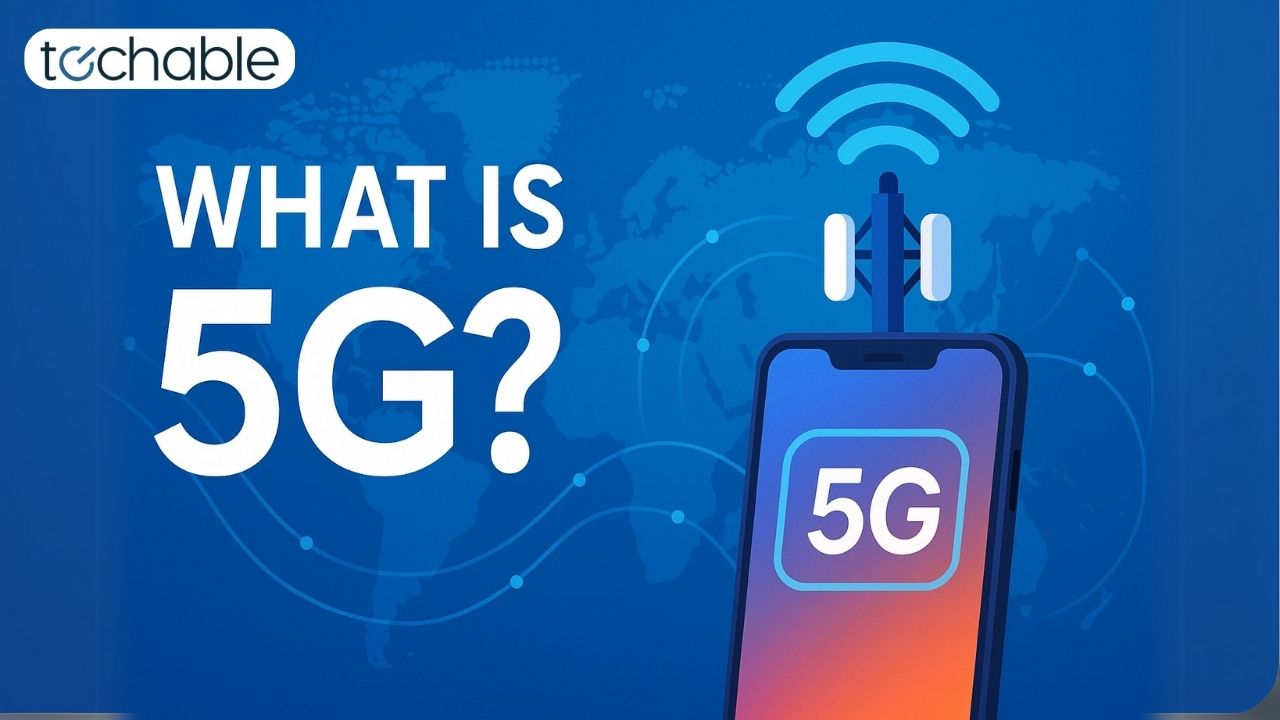


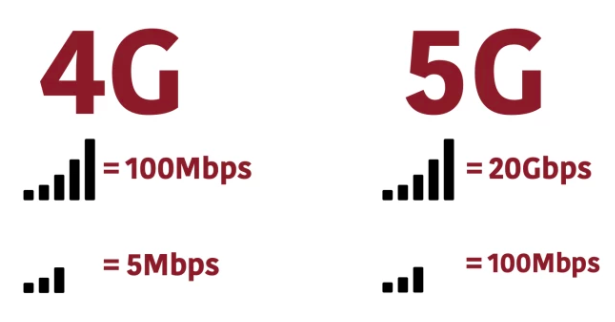


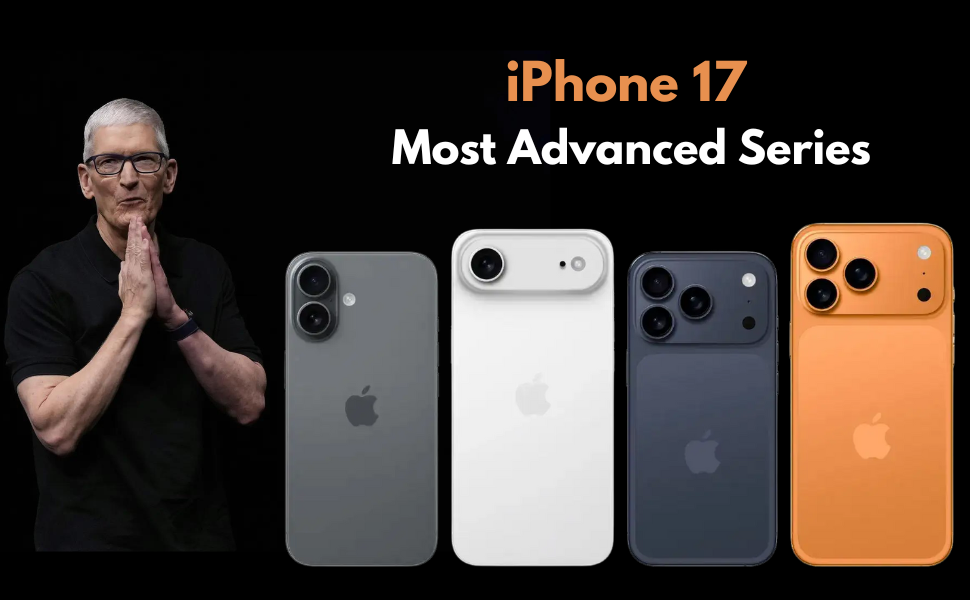
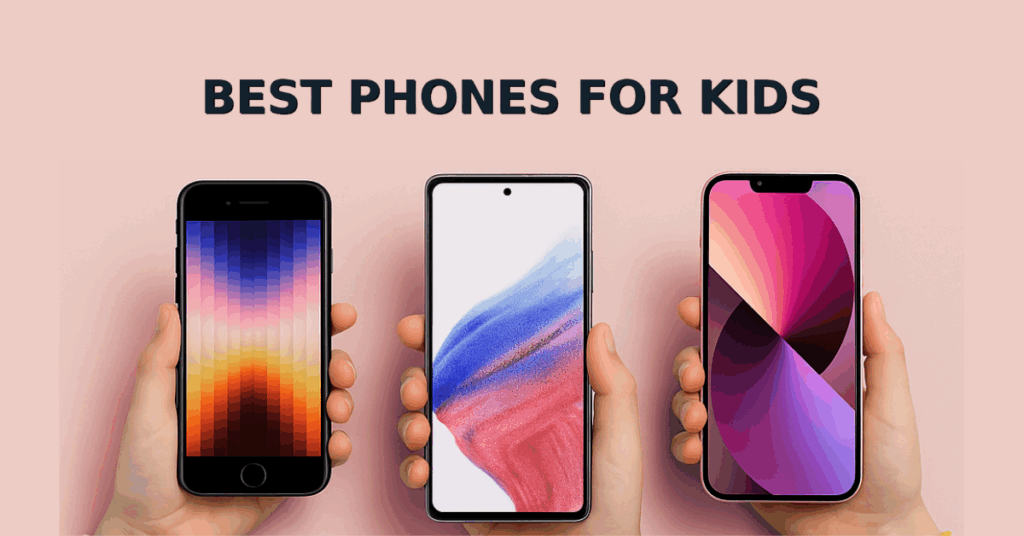


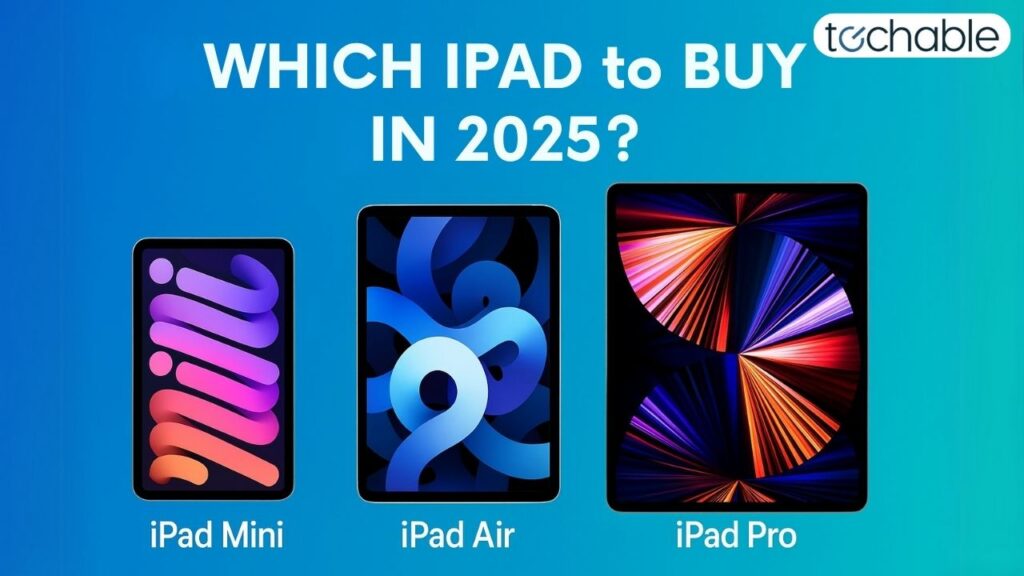
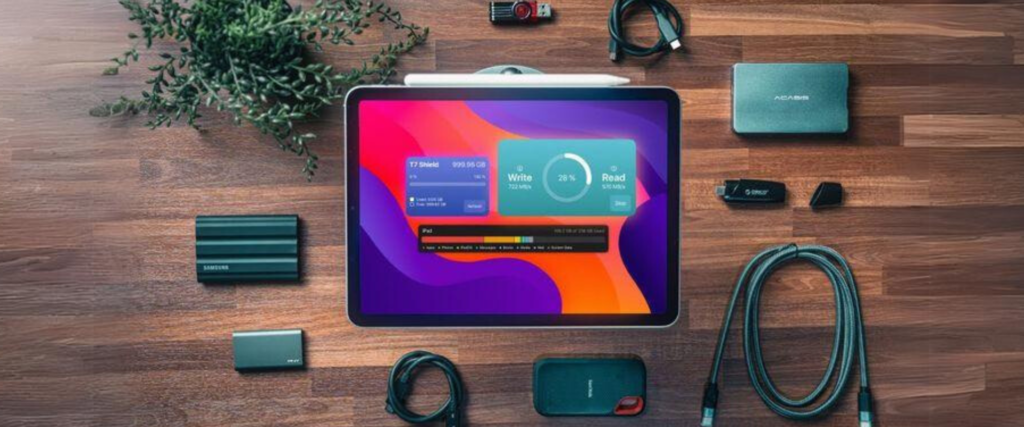


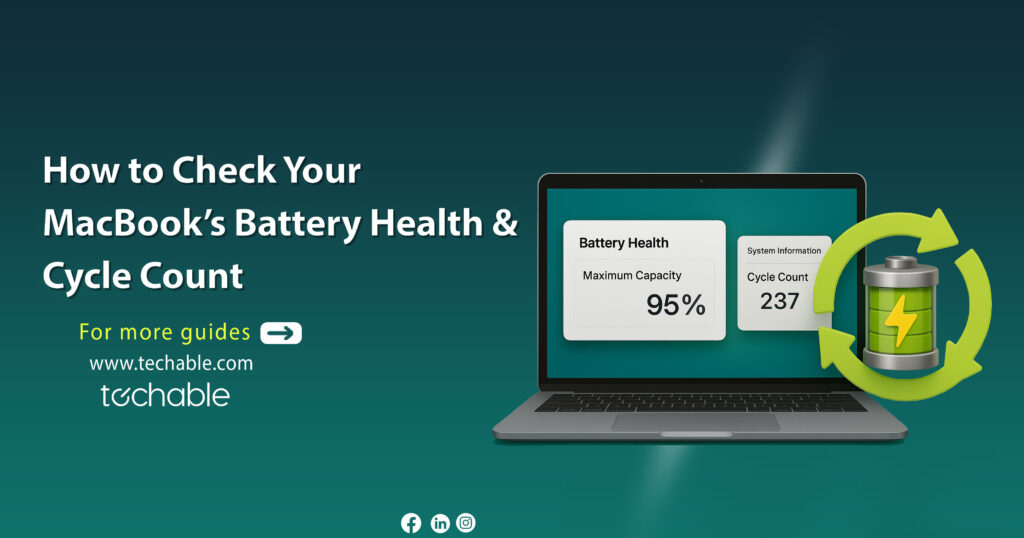
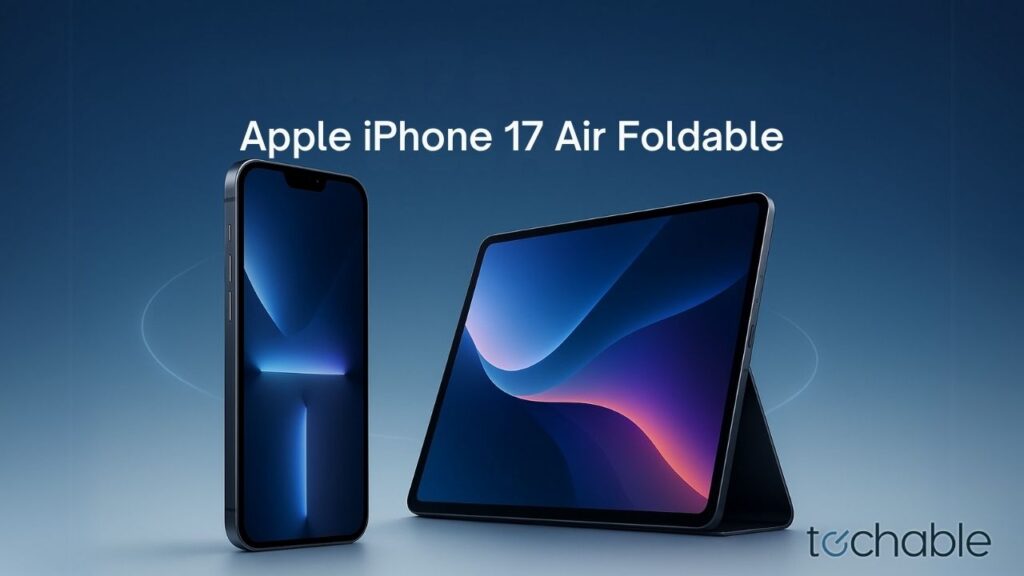


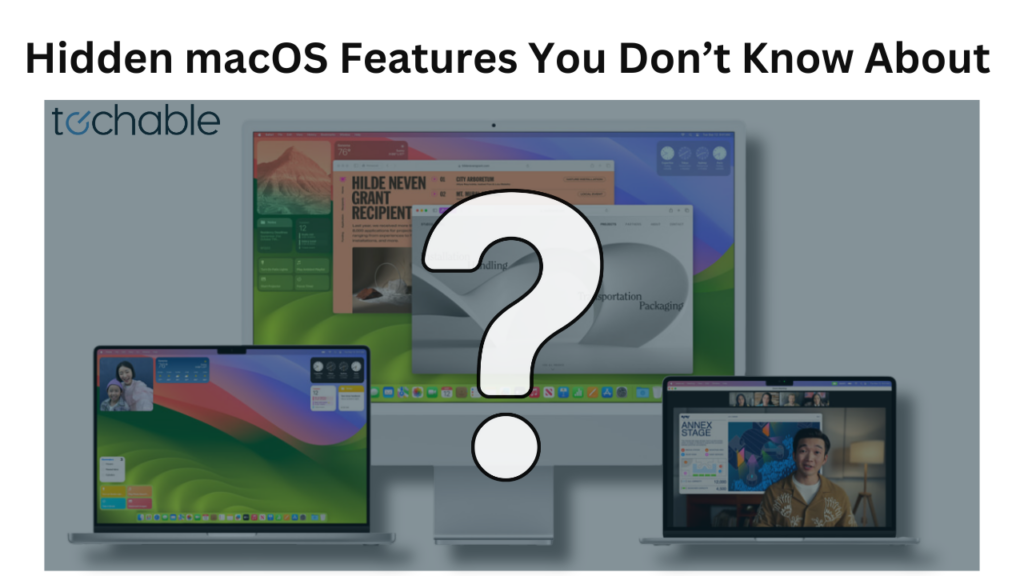
Nice! Thank you for this article! 😍